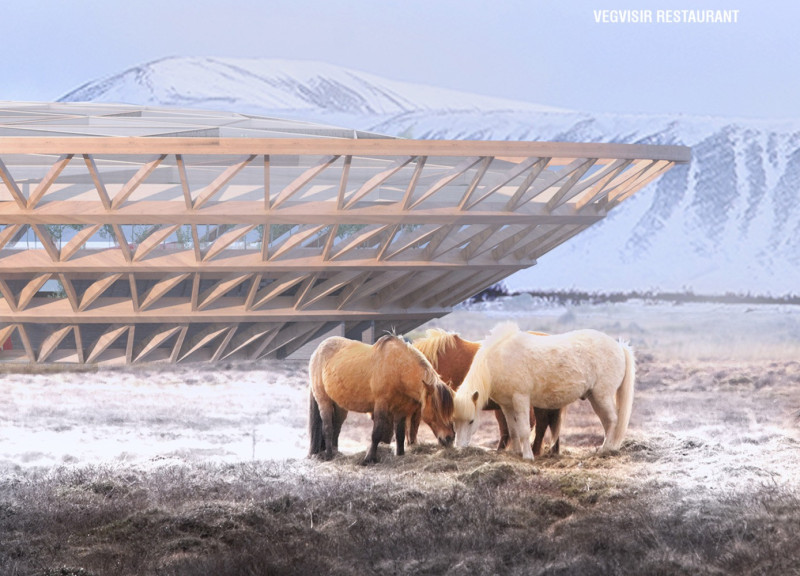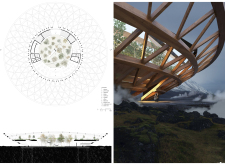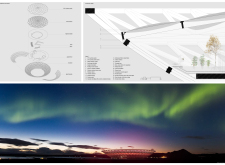5 key facts about this project
The Vegvisir Restaurant is located in a beautiful landscape marked by the strong presence of Hverfjall and Mývatn. It is designed to connect architecture with nature, using a circular shape that blends with the land. This layout not only serves food but also creates an experience that invites guests to feel part of the environment. The emphasis is on sustainability and reflecting local cultural values through design choices.
Architectural Concept
The main idea of the design is a pure circular form, which allows the restaurant to integrate smoothly into its surroundings. The central space features a green square that encourages interaction with nature. Surrounding the square, local plants like blueberries, berries, and small birches add to the landscape, promoting a sense of biodiversity and ecological awareness.
Spatial Organization
The layout of Vegvisir Restaurant focuses on movement and interaction. A circular path connects different areas, allowing guests to experience the sights and sounds of nature as they explore. An open kitchen acts as a highlight, allowing diners to see their food being prepared, enhancing their dining experience. Tables are arranged to keep visitors connected to the natural environment, allowing them to engage with their surroundings while they eat.
Sustainability and Materials
Sustainability is a key aspect of the design. Geothermal heat is used to maintain a comfortable temperature in the greenhouse, regardless of outside weather conditions. Rainwater is collected for irrigation and toilet use, showing a commitment to responsible water management. Wood is the primary material used, reinforcing the connection to nature and aligning with the overall design theme.
Symbolism and Cultural Context
The planting design in the greenhouse is inspired by the Vegvisir symbol, which represents guidance and relationship with nature. This thoughtful choice highlights the cultural significance of the project and strengthens its themes of interconnectedness. The architecture draws elements from traditional Viking buildings, creating a link to the region's historical identity.
Large glass facades allow natural light to enter and connect inside spaces with the landscape outside, making the environment feel open and inviting.






















































